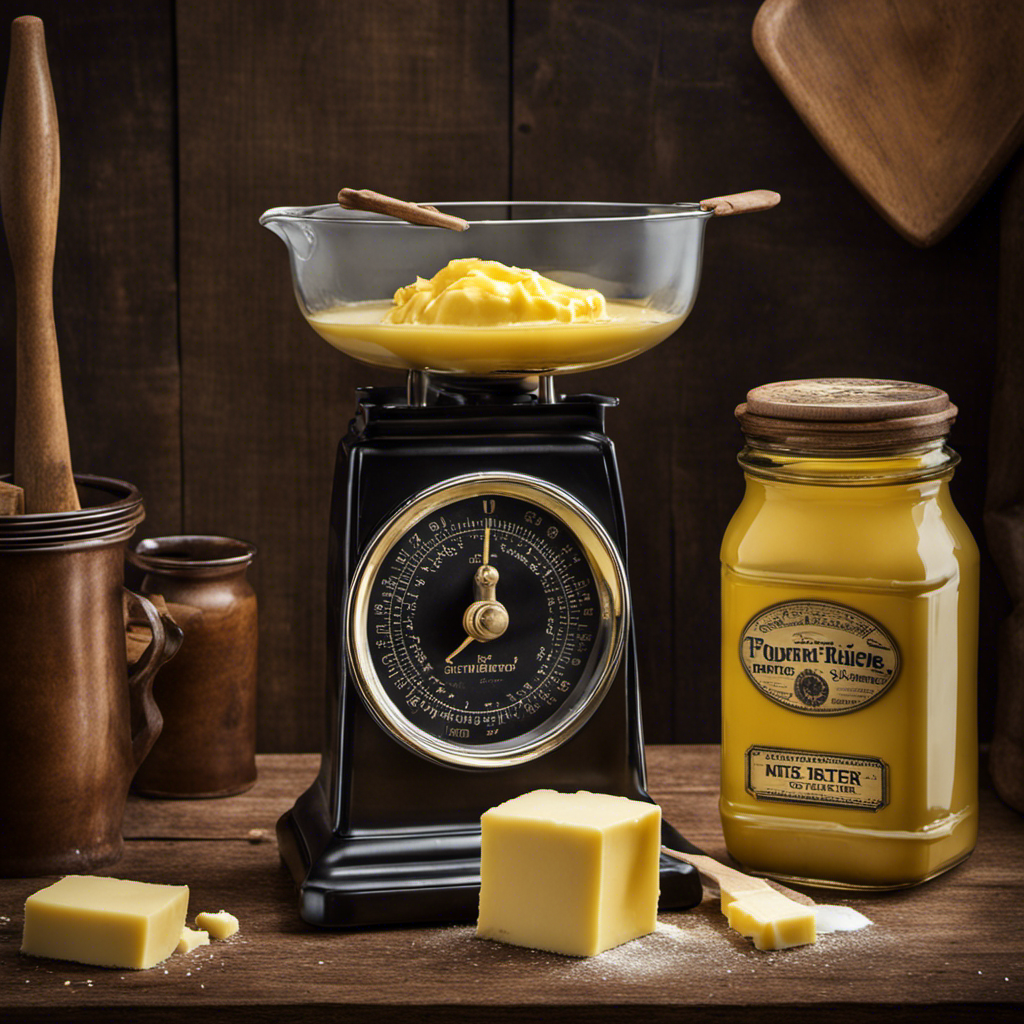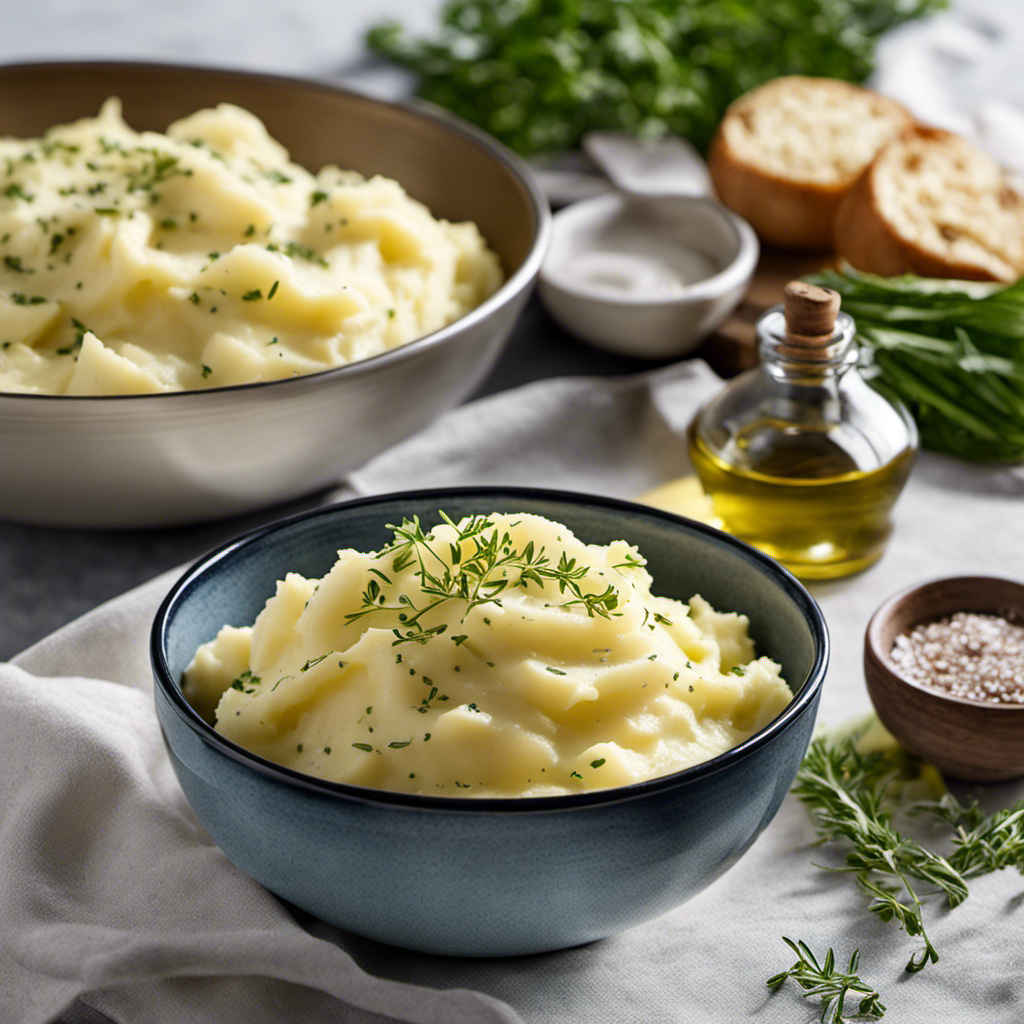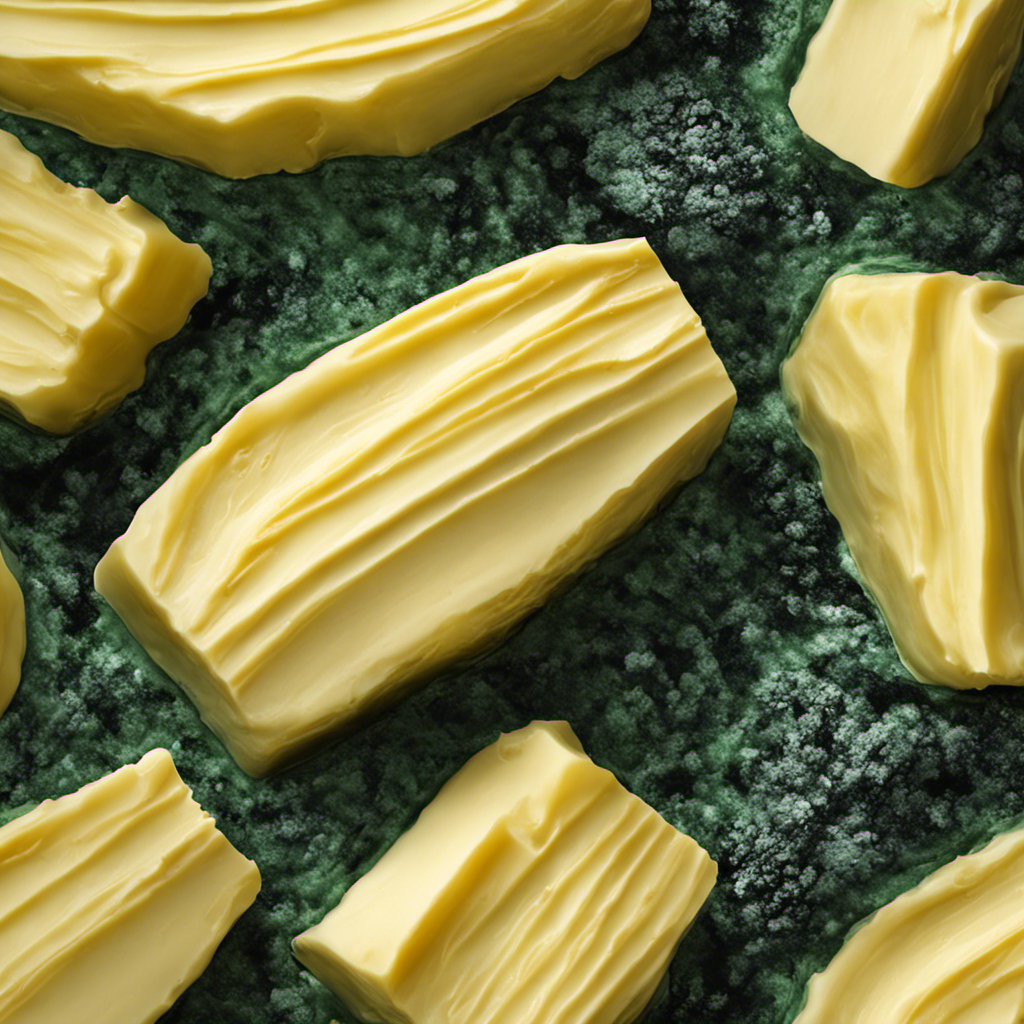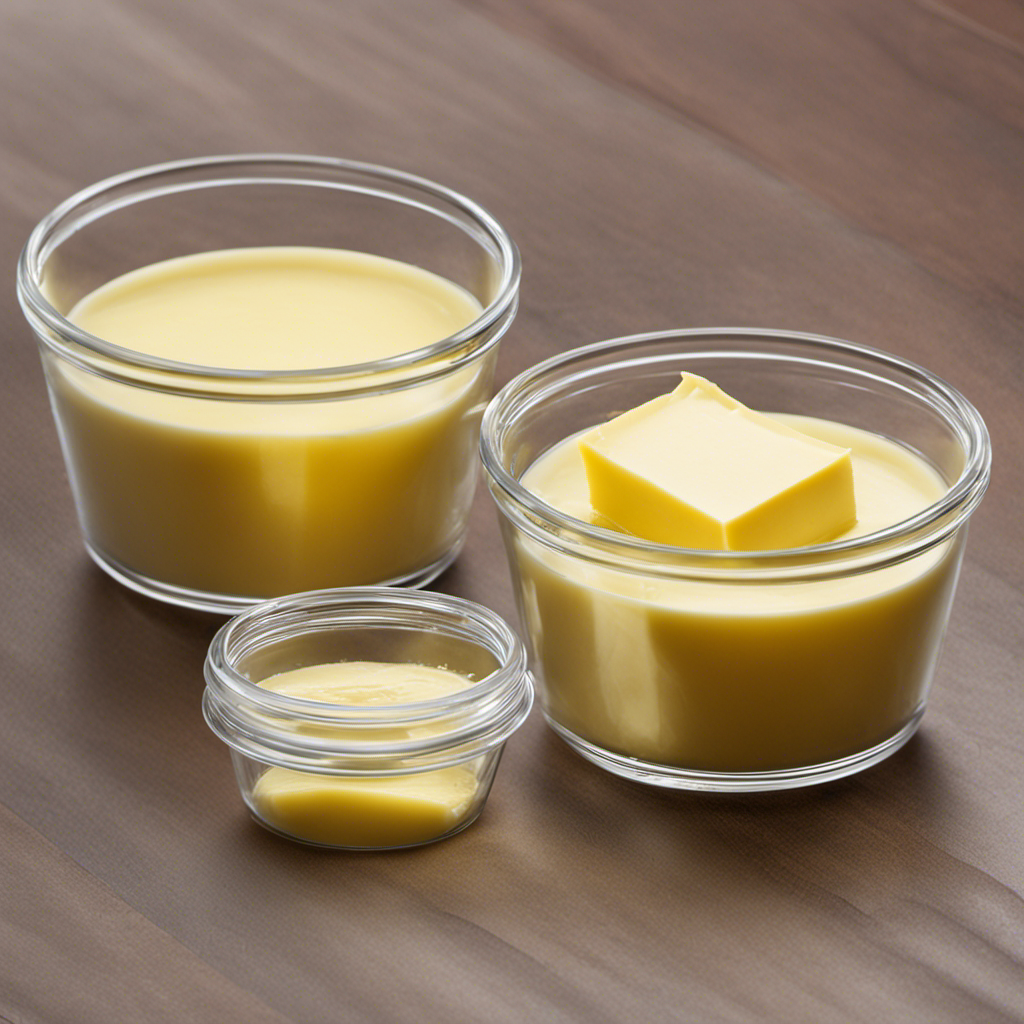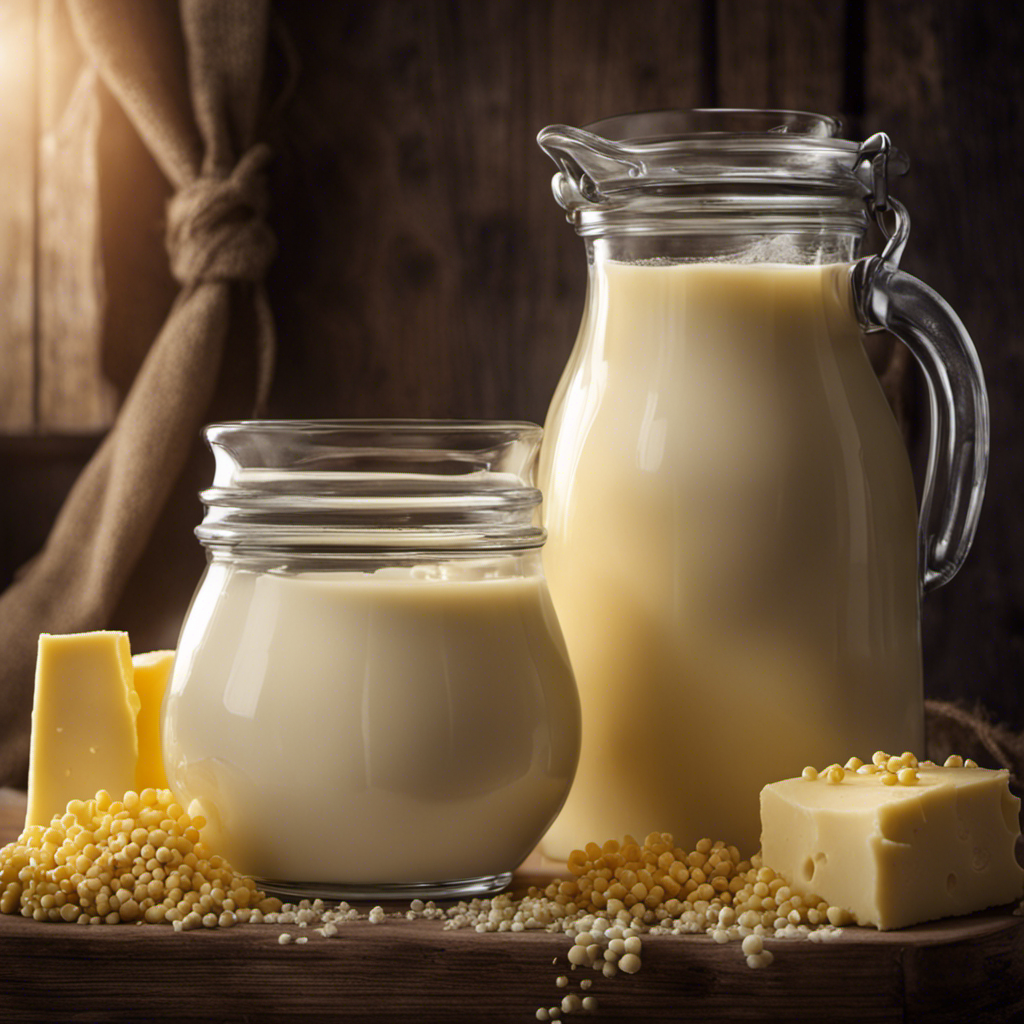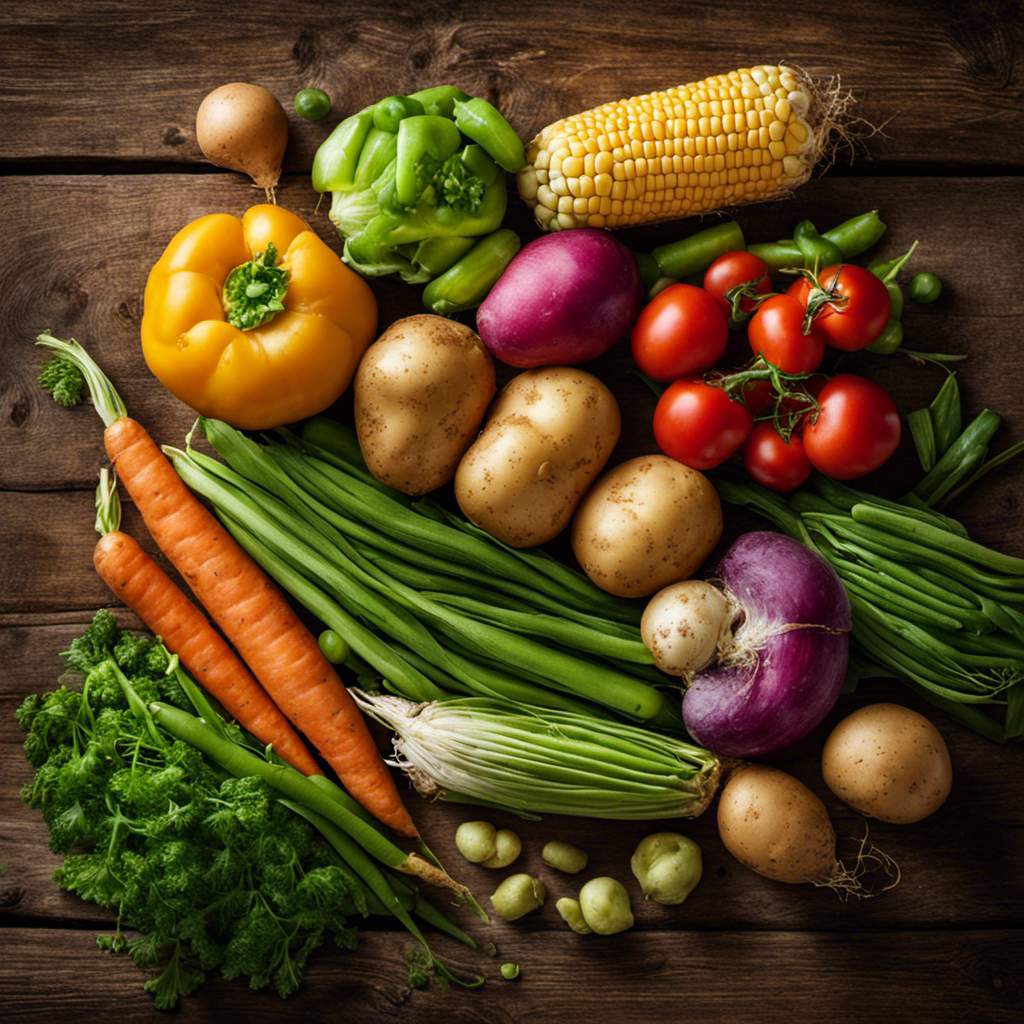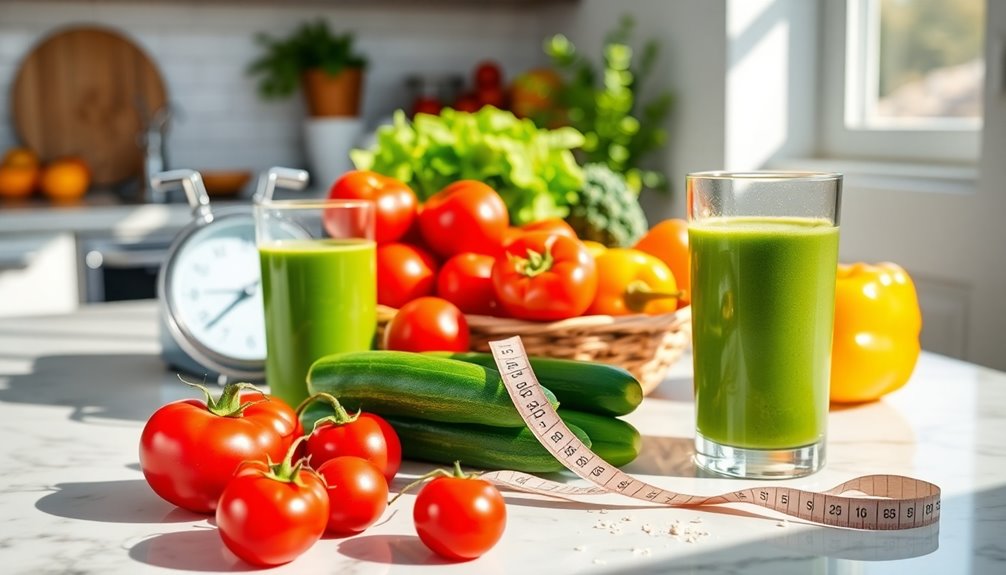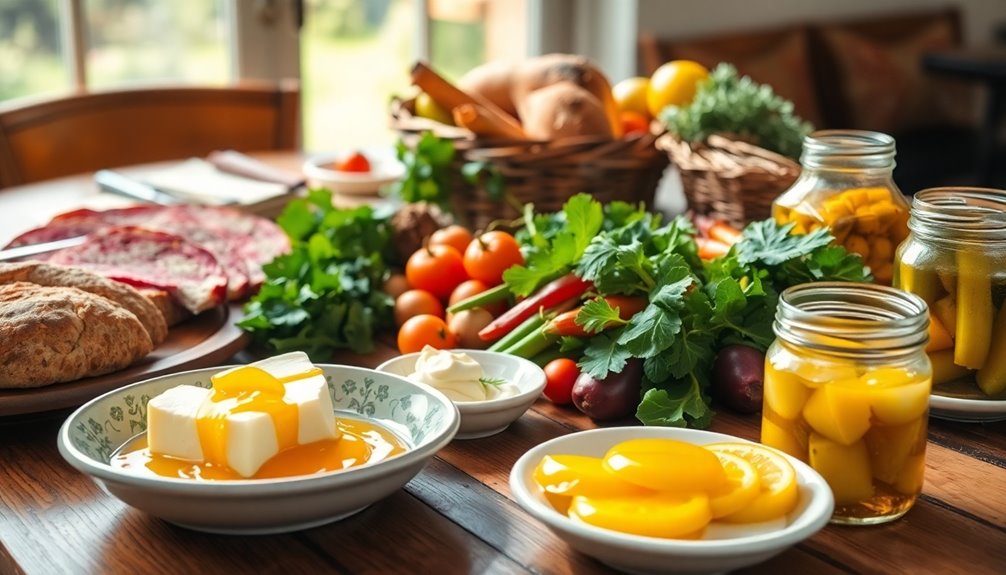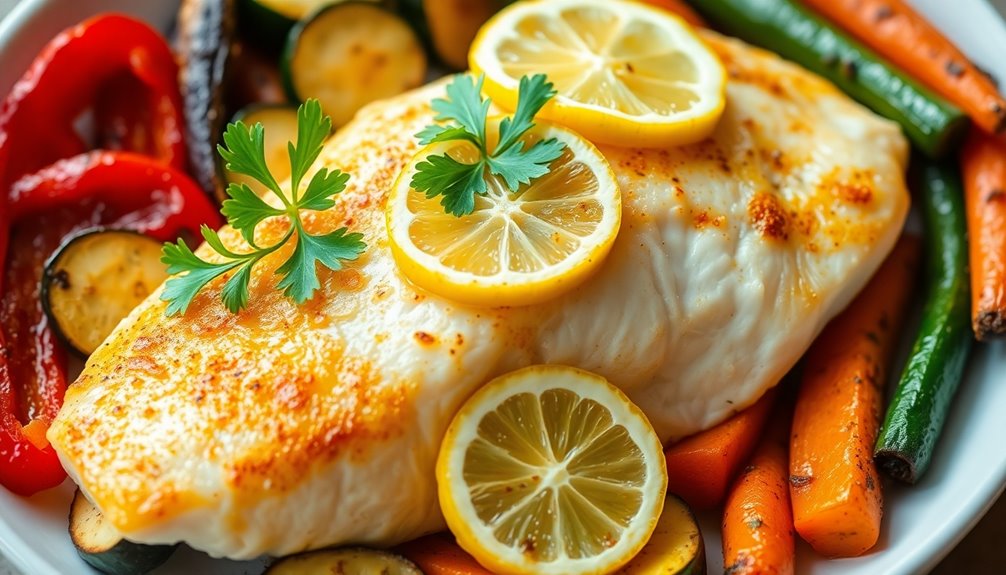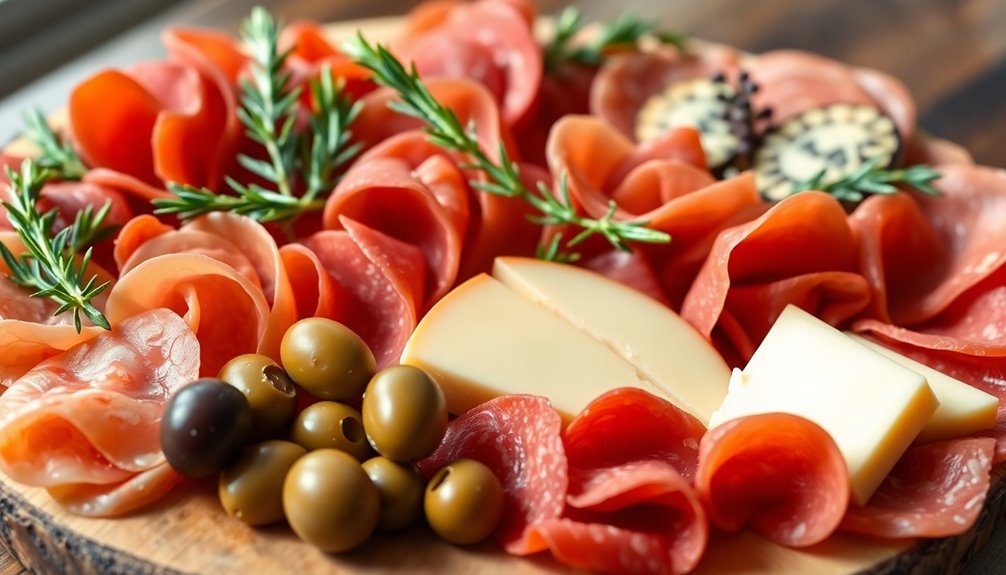I have always enjoyed baking, but I often find it confusing when recipes specify butter in cups and I only have sticks available. That’s why I took the time to research butter measurements and determine the exact conversion of sticks to cups.
In this article, I’ll break down the math behind converting cups to sticks, provide a handy conversion chart, and share common recipes that use butter.
Get ready to bake with confidence and precision!
Key Takeaways
- Butter is typically sold in sticks in the United States and each stick weighs 1/2 cup or 113 grams.
- One cup of butter equals two sticks.
- In Europe, butter is commonly sold in 250-gram blocks, which is equivalent to about one cup.
- It’s important to check specific measurements in recipes as different types of butter come in various measurements.
Understanding the Basics: Butter Measurements
One cup of butter equals two sticks. Understanding butter measurements is essential when following recipes.
Different types of butter come in various measurements, so knowing the equivalents is important for accurate baking and cooking. In the United States, butter is typically sold in sticks, which are conveniently pre-measured. Each stick usually weighs 1/2 cup or 113 grams. Therefore, if a recipe calls for one cup of butter, you will need two sticks.
However, in other countries, butter is often sold in different measurements. In Europe, butter is commonly sold in 250-gram blocks, which is equivalent to about one cup.
When using butter in recipes, always check the specific measurements to ensure the perfect outcome.
Converting Cups to Sticks: the Math Behind It
To convert cups to sticks, you’ll need to understand the math behind the conversion. One cup of butter is equal to two sticks. This is important to know when following recipes that call for specific measurements of butter in sticks.
However, if you’re looking for alternative butter substitutes for baking, it’s worth noting that not all brands of butter are created equal. Different brands can have varying water content, which can affect the texture and taste of your baked goods.
It’s always a good idea to stick to the brand recommended in the recipe, or if you’re trying a different brand, be aware that you may need to make adjustments to the recipe to achieve the desired results.
Handy Conversion Chart: Cups to Sticks Ratio
If you’re unsure about the ratio, it’s helpful to consult a handy conversion chart for cups to sticks. This chart will guide you in substituting butter with oil, or exploring plant-based alternatives for baking.
When it comes to baking substitutions, using oil instead of butter can be a great option. To convert the amount of butter needed to oil, the general rule is to use ¾ cup of oil for every 1 cup of butter. However, it’s important to note that the texture and taste of the final product may vary slightly.
If you’re looking for butter alternatives, there are various plant-based options available, such as margarine or vegan butter. These alternatives can be used in the same ratio as regular butter in recipes.
Remember to always check the conversion chart for accurate measurements and adjustments when substituting butter or exploring plant-based options.
Common Recipes and Butter Measurements
When making common recipes, it’s important to know the accurate measurements and adjustments for butter. Not only does butter add flavor and richness to dishes, but it also affects the texture and moisture content.
However, there may be times when you need to make substitutions or find alternatives to using butter in recipes. Some common baking substitutions include using coconut oil, applesauce, or Greek yogurt as a replacement for butter.
Additionally, knowing how to properly store butter can extend its shelf life. Butter should be kept in the refrigerator, tightly wrapped or in an airtight container, to prevent it from absorbing any odors. It can also be frozen for longer storage.
Now that we have covered baking substitutions and butter storage tips, let’s move on to some tips for accurate butter measurements.
Tips for Accurate Butter Measurements
You can ensure accurate butter measurements by using a kitchen scale to weigh the desired amount. This is one of the best tips for precise butter measurements.
Many people make the mistake of using measuring cups to measure butter, but this can lead to inconsistent results. Butter is sold in sticks, and each stick is typically equal to 1/2 cup or 8 tablespoons. However, depending on the brand or country, the weight of a stick of butter may vary slightly.
Frequently Asked Questions
Can I Use Margarine Instead of Butter in Recipes That Call for a Specific Number of Sticks?
Yes, you can use margarine instead of butter in recipes that call for a specific number of sticks. However, it may impact the taste and texture of baked goods. The debate between butter and margarine for baking continues.
How Do I Measure Butter if I Don’t Have Measuring Cups or Sticks?
When I don’t have measuring cups or sticks, I use alternative butter measurements. I find that butter substitutes for measurement, like margarine or oil, can be used in recipes as well.
Can I Substitute Oil for Butter in Recipes That Call for a Specific Number of Sticks?
Yes, you can substitute oil for butter in recipes that call for a specific number of sticks. However, keep in mind that oil has a different texture and flavor, so the end result may be slightly different. Also, consider using margarine as it has a similar consistency to butter.
How Many Tablespoons Are in a Stick of Butter?
To soften butter quickly, place it in a microwave-safe bowl and heat it in short bursts, checking frequently. Different types of butter, like salted and unsalted, have different uses in recipes.
Are There Any Recipes Where the Ratio of Cups to Sticks for Butter Is Different From the Standard Conversion?
In some international recipes, unique butter measurements may be used, where the ratio of cups to sticks differs from the standard conversion. Additionally, there are alternatives to using butter in baking.
Conclusion
So there you have it, folks! After delving deep into the world of butter measurements, we can confidently say that one cup of butter equals two sticks.
Now, I know some of you might be thinking, ‘Why do I even need to know this?’ Well, let me tell you, understanding the ratio between cups and sticks can make your baking adventures a whole lot smoother. No more guessing or eyeballing measurements!
With this knowledge, you can confidently conquer any recipe that calls for butter. So go forth, my fellow bakers, and let the buttery magic unfold!
